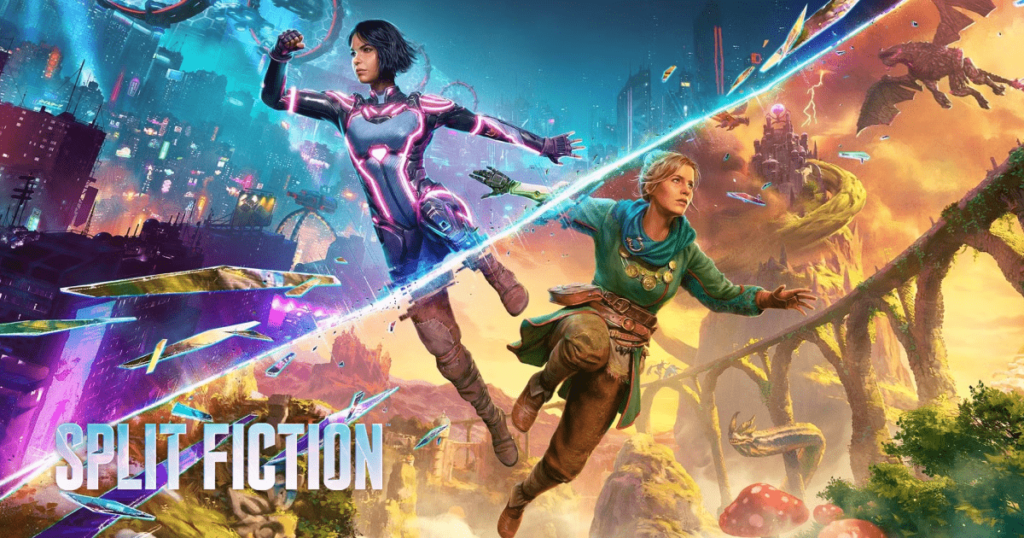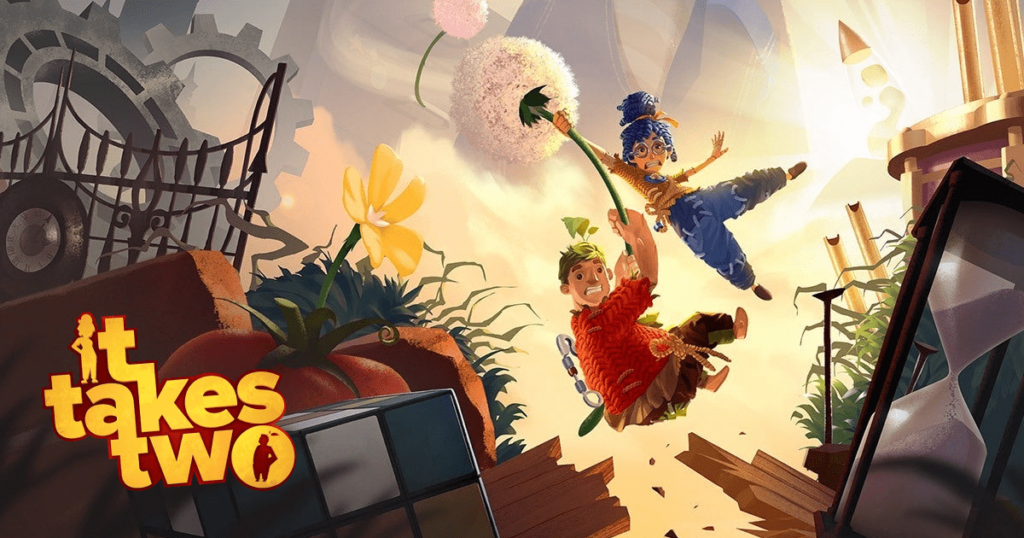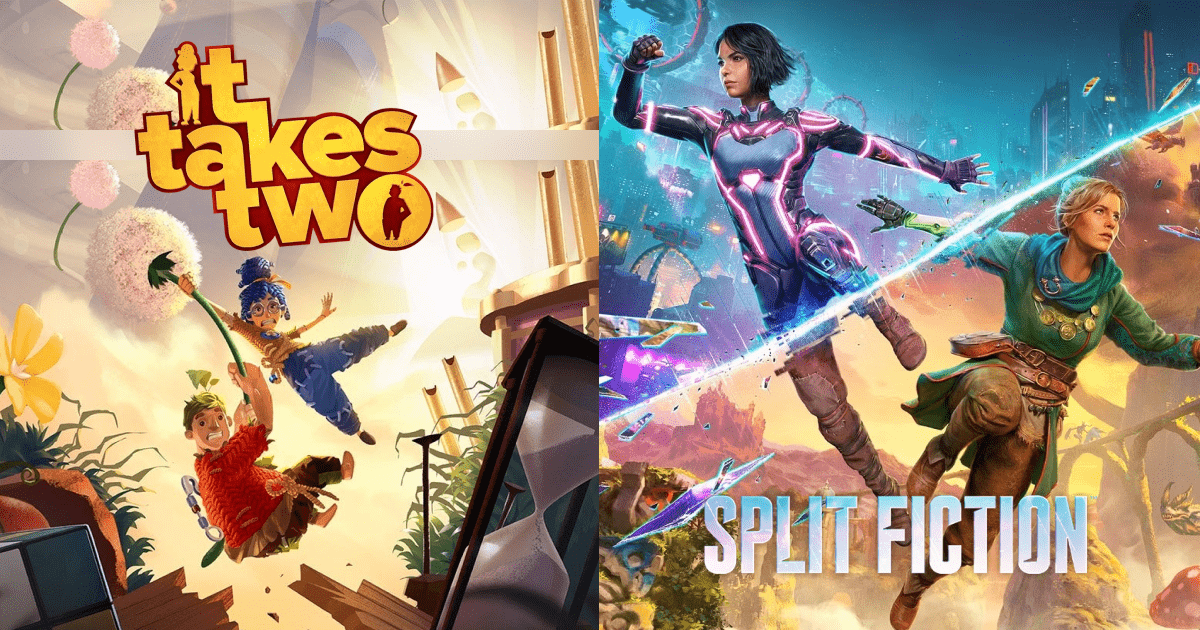Hazelight Studios, renowned for its innovative co-op experiences, has once again pushed the boundaries of collaborative gaming. With their critically acclaimed title It Takes Two setting a high bar in 2021, the studio now returns with Split Fiction. While both games share a foundation of teamwork and creative puzzle-solving, they cater to different audiences and deliver distinct experiences. Let’s dive into a detailed comparison of these two co-op adventures.
Themes and Storytelling
It Takes Two tells the deeply personal story of Cody and May, a couple on the brink of separation who must work together to overcome surreal challenges. The narrative is rich with emotional depth, using whimsical and metaphorical settings to explore themes of love, reconciliation, and the importance of collaboration. The story resonates with players by blending heartfelt drama with humor, making it accessible to a broad audience.
In contrast, Split Fiction takes a more inventive approach to storytelling. The game follows two writers, Mio and Zoe, who find themselves trapped within their own imaginative worlds—a blend of sci-fi and fantasy that delves into the creative process. The narrative also tackles modern themes such as the impact of AI on creativity and the evolving nature of artistic collaboration. This fresh storyline adds layers of intrigue, making Split Fiction particularly appealing to those who crave thought-provoking narratives in their gaming experiences.

Gameplay Mechanics
Both games are designed around cooperative gameplay, but they offer different mechanics that set them apart. It Takes Two is celebrated for its constant innovation; each level introduces new gameplay elements that keep the experience fresh. One moment, players might be solving puzzles by shooting goo, and in the next, they’re manipulating time. This rapid pace of change ensures that players are continuously engaged and challenged without feeling repetitive.
Split Fiction, on the other hand, delves deeper into its core mechanics. It emphasizes mastery of specific abilities such as gravity manipulation and shapeshifting. Levels in Split Fiction tend to be longer and more intricate, requiring players to invest time in perfecting each mechanic. This approach not only heightens the difficulty but also rewards players with a sense of accomplishment as they overcome tougher challenges, appealing to more experienced gamers.
Difficulty and Accessibility
When it comes to accessibility, It Takes Two is designed with a wide range of players in mind. Its puzzles and challenges are crafted to be approachable, making it an ideal choice for couples or friends with varying skill levels. The game’s friendly learning curve ensures that even those new to co-op gaming can enjoy the experience without feeling overwhelmed.
Conversely, Split Fiction targets seasoned gamers. Its high-paced action sequences—think surviving cyborg shootouts or racing through collapsing cities—demand quick reflexes and strategic thinking. The game’s difficulty curve is steeper, providing a robust challenge for veteran players who relish the opportunity to test their skills in more intense, action-oriented environments.
Co-Op Design
Both titles emphasize the importance of teamwork, but they approach co-op design differently. In It Takes Two, every puzzle and challenge is intertwined, meaning that both players must collaborate closely to progress. The game’s design ensures that no single player can take over, which reinforces the theme of unity and mutual support.
Split Fiction offers a slightly different twist: while cooperation is still essential, the game features more independent gameplay moments. Players tackle parallel challenges side by side, which allows for individual problem-solving even within the context of a shared mission. This design choice can foster healthy competition while still emphasizing collaborative strategy, making it a unique take on co-op gameplay.

Visual Style
The visual styles of the two games also set them apart. It Takes Two features vibrant, imaginative worlds that mirror the emotional journey of its characters. Its art style is playful and whimsical, with environments that are as expressive as the story itself. This approach makes the game accessible and enjoyable for a diverse audience.
Split Fiction takes a more varied visual approach, alternating between sleek, futuristic sci-fi skylines and lush, fantastical landscapes. This broader visual palette not only enhances the narrative of creative exploration but also provides a striking contrast to the more grounded, emotional worlds of It Takes Two. The result is a visually dynamic experience that appeals to players who appreciate both beauty and innovation.
Audience Appeal and Conclusion
Ultimately, the choice between It Takes Two and Split Fiction comes down to personal preference. If you’re seeking a heartfelt journey with accessible gameplay and a narrative that explores the intricacies of human relationships, It Takes Two is your go-to title. However, if you’re ready for a high-octane adventure that challenges your gaming skills and delves into modern themes of creativity and technology, Split Fiction is the perfect next step in Hazelight’s evolution of co-op gaming.
Both games showcase Hazelight Studios’ talent for crafting unforgettable co-op experiences, yet they cater to different tastes. Rather than competing directly, they complement each other, offering varied experiences for the diverse community of co-op gamers. Whether you choose the emotional depth of It Takes Two or the adrenaline-pumping challenges of Split Fiction, you’re in for a memorable adventure.
For more News about releases and updates, follow Baskin Gamer

